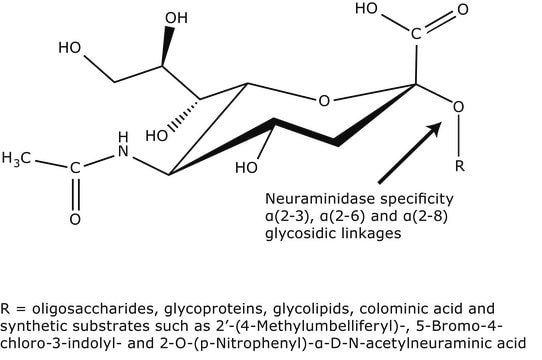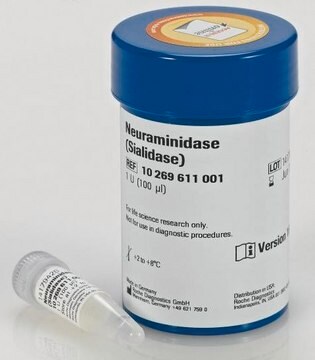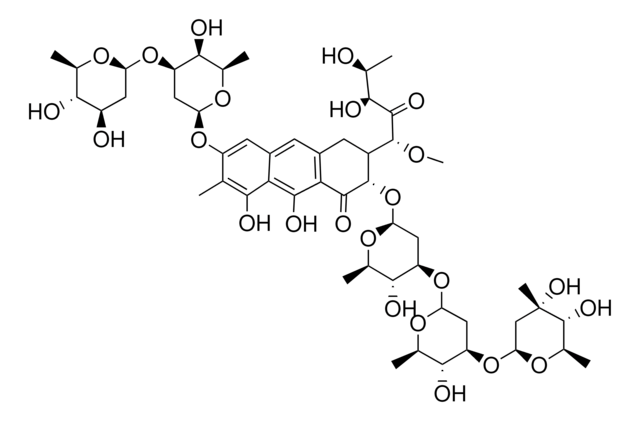N7885
Neuraminidase from Vibrio cholerae
Type III, buffered aqueous solution, 0.2 μm filtered, 1-5 units/mg protein (Lowry, using NAN-lactose)
Sinonimo/i:
Acyl-neuraminyl Hydrolase, Receptor-destroying enzyme, Sialidase
About This Item
Prodotti consigliati
Livello qualitativo
Tipo
Type III
Forma fisica
buffered aqueous solution
Attività specifica
1-5 units/mg protein (Lowry, using NAN-lactose)
PM
83 kDa
applicazioni
diagnostic assay manufacturing
Attività estranea
Protease and NAN-aldolase, present
Temperatura di conservazione
2-8°C
Cerchi prodotti simili? Visita Guida al confronto tra prodotti
Descrizione generale
Applicazioni
Azioni biochim/fisiol
Qualità
Definizione di unità
Stato fisico
Nota sulla preparazione
Avvertenze
Danger
Indicazioni di pericolo
Consigli di prudenza
Classi di pericolo
Resp. Sens. 1
Codice della classe di stoccaggio
10 - Combustible liquids
Classe di pericolosità dell'acqua (WGK)
WGK 1
Punto d’infiammabilità (°F)
Not applicable
Punto d’infiammabilità (°C)
Not applicable
Dispositivi di protezione individuale
Eyeshields, Gloves, type N95 (US)
Certificati d'analisi (COA)
Cerca il Certificati d'analisi (COA) digitando il numero di lotto/batch corrispondente. I numeri di lotto o di batch sono stampati sull'etichetta dei prodotti dopo la parola ‘Lotto’ o ‘Batch’.
Possiedi già questo prodotto?
I documenti relativi ai prodotti acquistati recentemente sono disponibili nell’Archivio dei documenti.
Protocolli
Il team dei nostri ricercatori vanta grande esperienza in tutte le aree della ricerca quali Life Science, scienza dei materiali, sintesi chimica, cromatografia, discipline analitiche, ecc..
Contatta l'Assistenza Tecnica.




